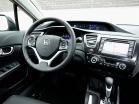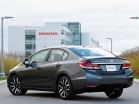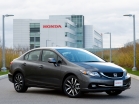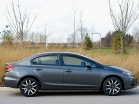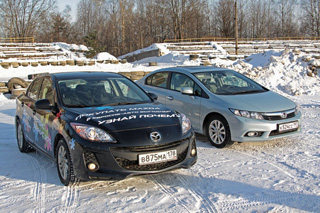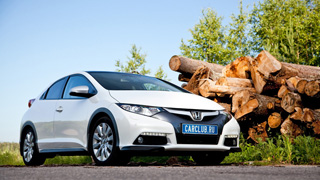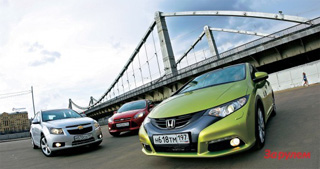Test Drive Honda Civic Sedan since 2012 Sedan
"City athlete." Honda Civic Car Overview
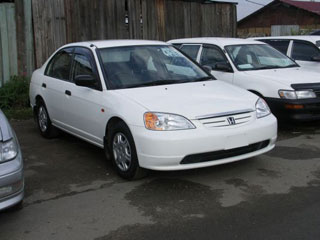 At the car market, find Honda Civic will not be a problem: there are sedans, and 5-door hatchbacks. But these models differ not only by the type of body, but also cost. So, the hatchback is not easy to find the cheaper $ 10,000, however for $ 11,000 a five-year-old car can easily find a new owner. Most likely, this is a fee for not the most common body in Japan and quite large space in the cabin. Civic Ferio sedans are cheaper: on average, cost starts from $ 7,500. But this relative cheapness is explained by the machine with a complete set of the machine, in which there will be only the most necessary (but there is no tachometer, additional adjustments of the driver's seat, the upholstery of the trunk, the steel wheels of the wheels will be covered with caps, etc.). If you want more, you will have to prepare at least $ 9000. However, it is still cheaper than hatchback.
At the car market, find Honda Civic will not be a problem: there are sedans, and 5-door hatchbacks. But these models differ not only by the type of body, but also cost. So, the hatchback is not easy to find the cheaper $ 10,000, however for $ 11,000 a five-year-old car can easily find a new owner. Most likely, this is a fee for not the most common body in Japan and quite large space in the cabin. Civic Ferio sedans are cheaper: on average, cost starts from $ 7,500. But this relative cheapness is explained by the machine with a complete set of the machine, in which there will be only the most necessary (but there is no tachometer, additional adjustments of the driver's seat, the upholstery of the trunk, the steel wheels of the wheels will be covered with caps, etc.). If you want more, you will have to prepare at least $ 9000. However, it is still cheaper than hatchback. Civic Ferio is very much reminded by the car of the previous generation, which may not like the fans of the new, but surely you will like the conservatives
Once from Japan carried almost everything that had wheels and could move independently. Then there was a natural selection of the most reliable, comfortable and, importantly, maintainable models. Since all Honda models have differed by a particularly high production culture and technologicality, then, naturally, for some time the popularity of this brand has noticeably decreased. But today the prestige of Honda is high as ever, and these cars buy quite and quite willingly. At the same time, there are more and more cars in recent generations. It is to such a Honda Civic that can be attributed.
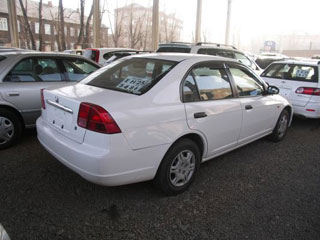 The front panel of the sedan, like the body, is very similar to that of the sixth generation of the model. Its most unusual detail located vertically microclimate control las
The front panel of the sedan, like the body, is very similar to that of the sixth generation of the model. Its most unusual detail located vertically microclimate control las The sale of the seventh (now the penultimate) generation of Honda Civic, which today will be discussed, in Japan began in September 2000 and lasted until August last year. For the domestic market, four types of body were offered: a sedan (Civic Ferio), a coupe, as well as five and three-door hatchbacks (the latter was represented mainly charged version of Type R). The distinctive feature of this generation of the model was the increased height of the body: an increase in growth from the sedan is 5, and the hatchback has 10.5 cm! Naturally, this favorablely affected the inner space and comfort: if you wish in a hatchback, you can even try to get from the front armchairs back (and back), without leaving the car, the benefit that there is nothing between the seats: the ACP selector is located on the console, And the parking brake lever is replaced by a foot pedal. In addition, the hatchback is distinguished by a special ergonomics of a driver's seat: here you can set up almost like in a home chair, all controls will be available and convenient. The salon of the sedan to the internal movement does not have, however, and here passengers will not feel more stronger. At the same time, in both versions, the floor in the cabin has no tunnel.
1.5-liter D15B on sedans in the simplest configuration does not have VTEC systems
Regarding the space for the rear passengers, the sedan slimming exceeds his classmates. His chip of the absence of a tunnel on the floor
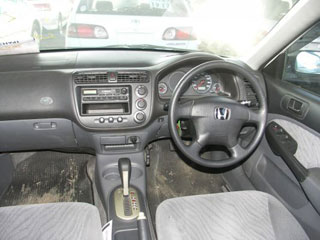 The most simple versions of the sedans have a very unassuming trunk: there are no pockets, no hooks, nor even upholstery, not to mention the possibility of folding the backs of the rear sofa ...
The most simple versions of the sedans have a very unassuming trunk: there are no pockets, no hooks, nor even upholstery, not to mention the possibility of folding the backs of the rear sofa ... As for the appearance of the penultimate Civic, it is difficult to say something bad here. The hatchback is almost completely completely devoid of family features, but it is distinguished by enviable elegance, spoils which non-chanting of the stern. The Civic Ferio sedan, on the contrary, is very similar to the previous generation model of the same name: the main differences are reduced to the design and form of optics. There is a similarity and in the interior. However, by the end of the release of the sedans, a small facelifting was held, which by style brought them to the hatchbacks. However, the design of the car whose age is more than six years the concept is very and very conditional. The main thing in such cars is the technical condition, resource and reliability of the main nodes and aggregates.
The engines for the seventh Sivik are offered three: 1.5-liter D15B (with a VTEC system and without it), 1.7-liter D17A (VTEC) and for Type R 2.0-liter 215-strong K20A. Also, since the fall of 2002, a hybrid version of the model with a 1,3-liter 85-strong engine and a 134-strong electric motor was proposed. But in Irkutsk so far such cars (as, however, and Civic Type R) are practically not found, so there is nothing to say about them. But as for ordinary sedans and Civic hatchbacks, there is already here
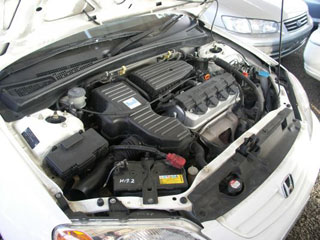 certain observations. First, Civic engines belong to the so-called disposable, that is, not involving overhaul: only replacing the piston rings and inserts to new ones are possible. In the extreme case, you can always pick up a new engine from the category, which serves no less than the first (taking into account the run in Japan, of course), the benefit of such motors is non-aimed more than 20,000 rubles. Secondly, Hondov's motors are distinguished by special engineering and assembly culture, thanks to which the real resource of the engines is at least 200,000, or even more than 300,000 km. Even such banalities as the failure of all sorts of sensors of Honda Civic owners, as a rule, do not bother. But here to the quality of lubricants should be treated with special attention, especially machine owners with a variable gas distribution phase system (VTEC): Here the main thing is not to apply excessive flowable or, on the contrary, too thick oils. And, of course, to change them on time, and filters (oil, fuel, air). In general, the basic condition for the long and reliable operation of Hondovsky motors is purity: fuel system, lubricant and cooling systems, as well as combustion chambers. In addition, among the operational features of Honda engines, in general and CIVIC, in particular, it is necessary to note the problems with the cold winter launch of machines, which have a system for reducing the emission of the exhaust gases of LEV. Because of this system, as well as because of the differences between the Russian gasoline from Japanese (we have fewer light fractions), the starting program of the LEVVOVOVOG MOTORS is simply not able to provide a guaranteed launch of the motor at low temperatures. Previously, in Irkutsk, this problem was solved by installing a special device, artificially increasing the fuel supply at startup. But now specialists
certain observations. First, Civic engines belong to the so-called disposable, that is, not involving overhaul: only replacing the piston rings and inserts to new ones are possible. In the extreme case, you can always pick up a new engine from the category, which serves no less than the first (taking into account the run in Japan, of course), the benefit of such motors is non-aimed more than 20,000 rubles. Secondly, Hondov's motors are distinguished by special engineering and assembly culture, thanks to which the real resource of the engines is at least 200,000, or even more than 300,000 km. Even such banalities as the failure of all sorts of sensors of Honda Civic owners, as a rule, do not bother. But here to the quality of lubricants should be treated with special attention, especially machine owners with a variable gas distribution phase system (VTEC): Here the main thing is not to apply excessive flowable or, on the contrary, too thick oils. And, of course, to change them on time, and filters (oil, fuel, air). In general, the basic condition for the long and reliable operation of Hondovsky motors is purity: fuel system, lubricant and cooling systems, as well as combustion chambers. In addition, among the operational features of Honda engines, in general and CIVIC, in particular, it is necessary to note the problems with the cold winter launch of machines, which have a system for reducing the emission of the exhaust gases of LEV. Because of this system, as well as because of the differences between the Russian gasoline from Japanese (we have fewer light fractions), the starting program of the LEVVOVOVOG MOTORS is simply not able to provide a guaranteed launch of the motor at low temperatures. Previously, in Irkutsk, this problem was solved by installing a special device, artificially increasing the fuel supply at startup. But now specialists 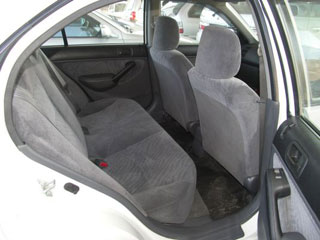 it is recommended to simply run the engine from the second and third times (do two or three short starter scrolls) or not torturing the motors at all, setting the preheater. But the use of systems with autorun and engine warming is not recommended: poorly breathing engines at idle turns are prone to clocking.
it is recommended to simply run the engine from the second and third times (do two or three short starter scrolls) or not torturing the motors at all, setting the preheater. But the use of systems with autorun and engine warming is not recommended: poorly breathing engines at idle turns are prone to clocking. Extremely additional shelf justifies a small compartment
No complaints and reliability of Civic transmission elements: Machines and mechanics serve for a long time and allow even some negligence in circulation. The main condition for their reliability timely replacement of oils or ATF (for the ACP, the Honda Z1 specialists are prescribed, however, according to experts, they are allowed to replace them with Castrol Transmax-Z or even normal, but qualitative and more modern dexron). But as for the variator gearboxes, there are problems here, of which the most common (at least 60% of all cases) malfunction / wear of the friction block that provides start-up (Start-Clutch). This block is, in fact, is an automatic grip, which is triggered when the brake pedal is released and the gas pedal is pressed. Start-Clutch malfunction symptoms are manifested in a fuzzy start (possibly with a sharp impetus or even a blow), tightening the start process or trembling and twitching the car when stopping. Fortunately, all these symptoms can be easily detected when choosing a car. In the extreme case, the start-clutch replacement in the collection will cost approximately $ 250-300, the replacement work at 12000-15000 rubles. But the wear of the variator node (belt and slave / driving pulleys) in our conditions are almost incurable, since Honda does not supply this node to replace. Even alternative manufacturers here are unlikely to help. The output is actually one: CV Replacement
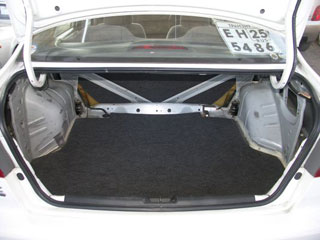 T, which can do in the amount of up to $ 2500, and not yet the fact that the new variator will be really in good condition. In addition, it is quite difficult to detect this problem (especially someone who did not come across the variasts). It remains to be consoorated only by the fact that, firstly, the original resource of the variastors is actually equal to the resource of the motor, (of course, if the Japanese owner in time and high-qualityly served a car), and secondly, this problem is less common. But besides the start-clutch and the variator assembly, CVT Honda Civic can still distort the executive mechanisms (solenoids), as well as the common clogging of the variator. Cleanliness in the cavity of the box, by the way, and on the goodness of Start-Clutch also affects. So the main requirement for Civic owners (especially variational) purity in nodes and units. By the way, the manufacturer instructor prescribes to use in variators exclusively Honda Multi Matic Fluid, as a last resort Honda Z1, but nothing else!
T, which can do in the amount of up to $ 2500, and not yet the fact that the new variator will be really in good condition. In addition, it is quite difficult to detect this problem (especially someone who did not come across the variasts). It remains to be consoorated only by the fact that, firstly, the original resource of the variastors is actually equal to the resource of the motor, (of course, if the Japanese owner in time and high-qualityly served a car), and secondly, this problem is less common. But besides the start-clutch and the variator assembly, CVT Honda Civic can still distort the executive mechanisms (solenoids), as well as the common clogging of the variator. Cleanliness in the cavity of the box, by the way, and on the goodness of Start-Clutch also affects. So the main requirement for Civic owners (especially variational) purity in nodes and units. By the way, the manufacturer instructor prescribes to use in variators exclusively Honda Multi Matic Fluid, as a last resort Honda Z1, but nothing else! Thanks to a completely flat floor, missing KP levers and a handbrake, as well as a folding armrest, hatchback passengers can, without leaving the car, move across the cabin. True, provided that their growth is lower than the average ...
Hatchback, unlike sedan, offers more living space and front and rear
Many Civic have a all-wheel drive transmission with traditional DPS hydromechanical system for Honda (Dual Pump System). When choosing such a car, it is necessary to check its serviceability (DPS is triggered when digging the front wheels or with a difference in angular velocities, for example, in cool turns) and keep in mind that the DPS resource is actually about 15,000,000 km, and then how lucky.
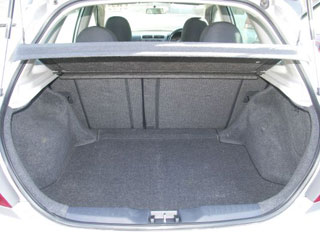 D15B on hatchbacks is most often distinguished by the presence of changing phases of gas distribution. But here VTEC is configured to achieve maximum torque in the widest range of engine speeds, and not at maximum power, as before
D15B on hatchbacks is most often distinguished by the presence of changing phases of gas distribution. But here VTEC is configured to achieve maximum torque in the widest range of engine speeds, and not at maximum power, as before Hatchback trunk modest, but neat
The seventh generation Civic suspension, as already mentioned, was performed practically in the classic scheme: McPherson depreciation racks with a subframe in front and completely independent, with depreciation racks, rear. At the same time, the reliability of the chassis of Civic is one of the exemplary in the class. As such weak places in the seventh-generation Civic suspension. Pay attention is worth it for silent blocks (especially rear). Well, of course, on our roads faster than the usual shock absorbers.
Summarizing all of the foregoing, it can be noted that the seventh Civic is a good, modern and very reliable car, among whose advantages there are good handling, efficiency and spacious salon. There are also cons. Even the variator boxes can not be called frankly weak of the machine: the main thing is not to buy a scaled and confused instance. However, the features of buying a car used this is a completely different topic ...
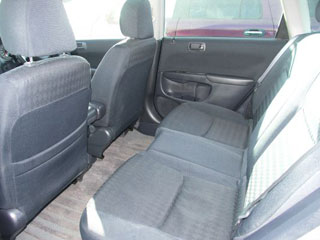
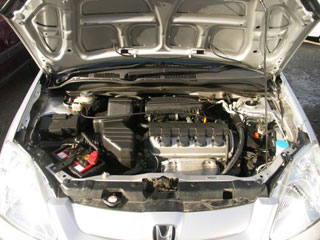
Alexey Stepanov
Magazine Automarket + Sport
A source: Drom.ru.

